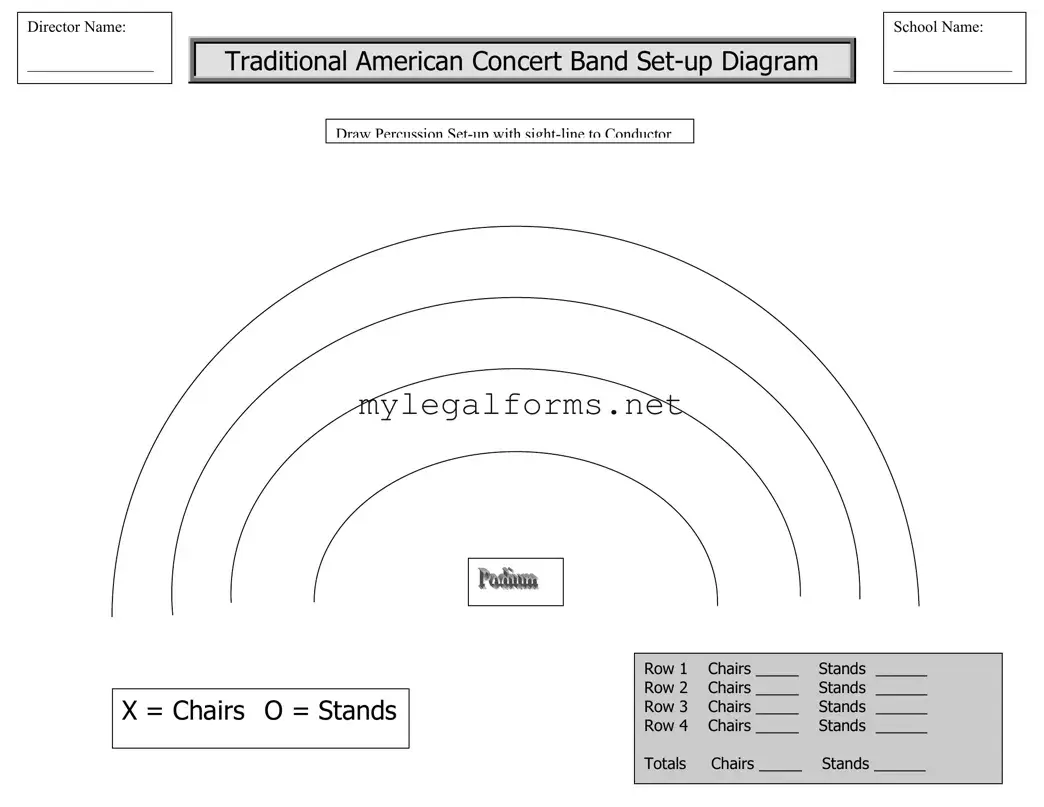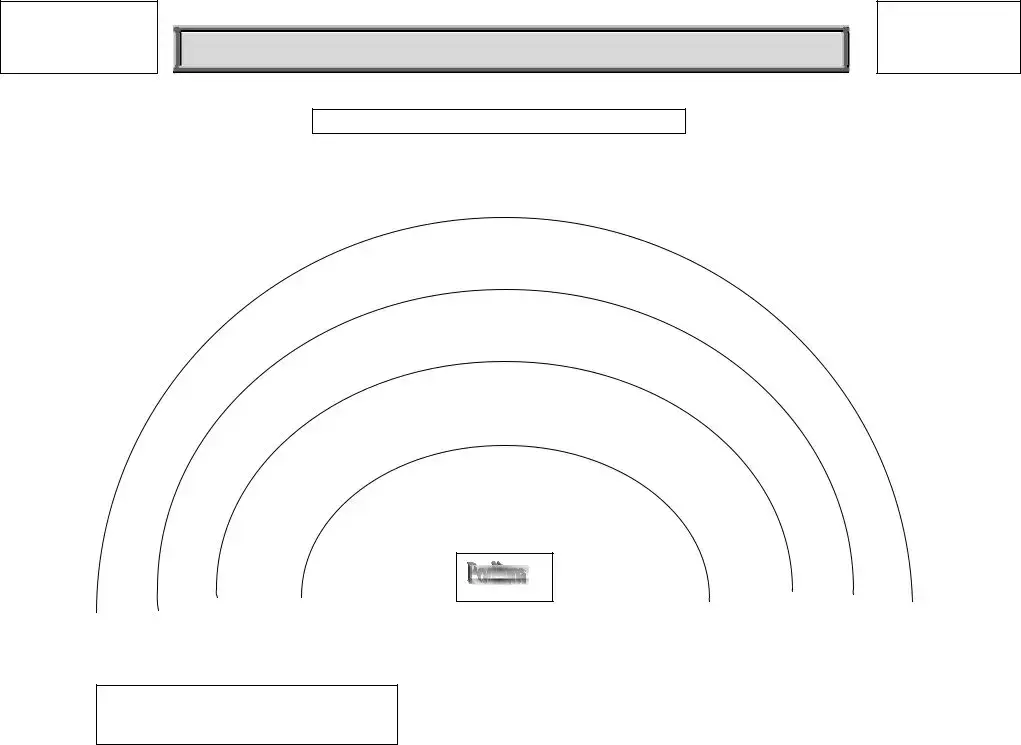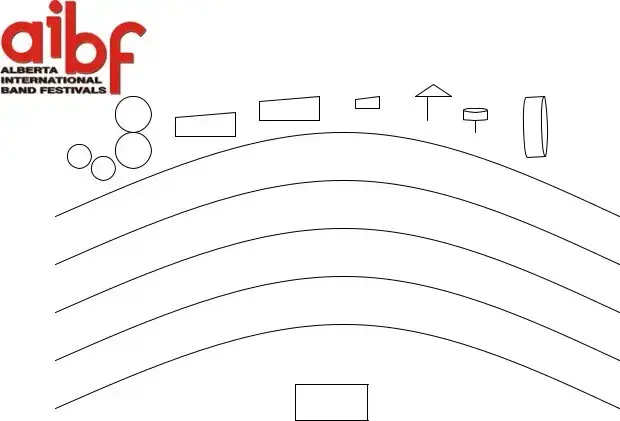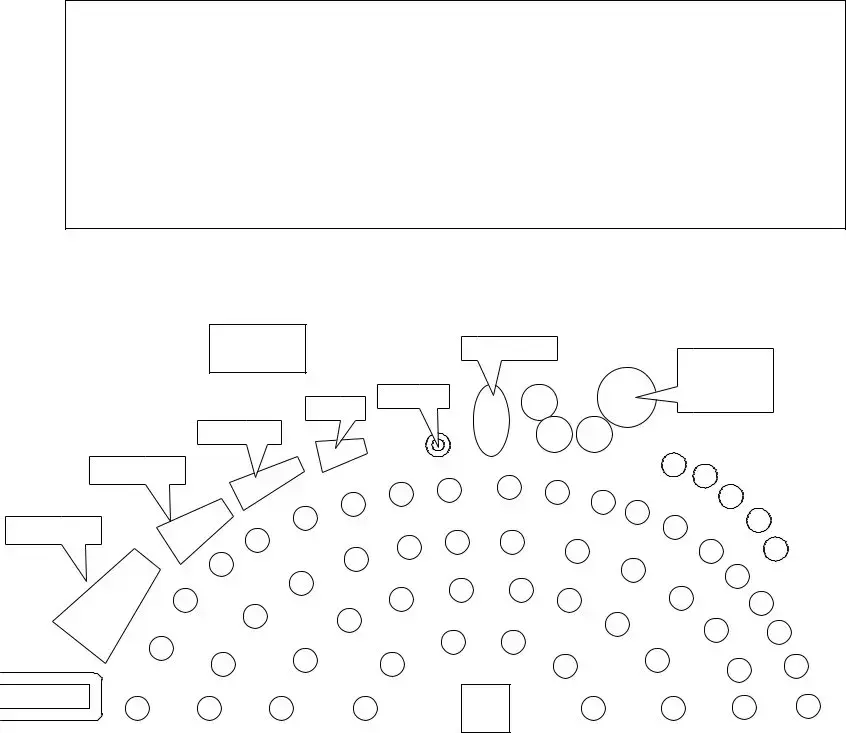Band Seating Chart Template
The Band Seating Chart form is a crucial tool for organizing musicians in a concert band setting. This form helps directors outline the arrangement of chairs and music stands for each section, ensuring that every performer has a clear sightline to the conductor. By accurately filling out this chart, directors can create an effective performance environment that enhances the overall sound and experience.
Launch Band Seating Chart Editor



